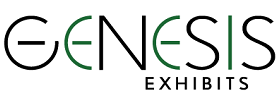Cybersecurity at Trade Shows: Dos and Don’ts for Event Professionals
Trade shows and conferences are bustling hubs of networking, innovation, education and business opportunities. But with all the excitement, they’re also prime targets for cybercriminals looking to exploit security vulnerabilities. Whether you're an organizer, exhibitor, or attendee, safeguarding your digital assets is crucial. From data theft to Wi-Fi hacking, the risks are real but so are the solutions. Here’s a rundown of the dos and don’ts to keep your event experience secure.
For Trade Show Organizers
DO: Provide a Secure Wi-Fi Network
Public Wi-Fi is an easy entry point for cybercriminals. Offer an encrypted, password-protected network for exhibitors and attendees, and consider a separate, even more secure connection for staff.
DO: Educate Exhibitors and Attendees on Cybersecurity Best Practices
Pre-event communication should include cybersecurity guidelines. Provide tips on recognizing phishing scams, securing devices, and using VPNs.
DO: Vet Vendors and Third-Party Services
If your event requires mobile apps, ticketing systems, or exhibitor portals, ensure they comply with cybersecurity best practices. Require vendors to meet stringent security protocols before integrating their technology into your event.
DON’T: Overlook Access Controls
Limit access to sensitive event data, such as attendee lists and payment information. Only authorized personnel should have access to critical systems. Implement multi-factor authentication (MFA) wherever possible.
DON’T: Store Sensitive Information on Unsecured Platforms
Avoid keeping large databases of attendee or exhibitor details on cloud-based services without proper encryption. If possible, delete sensitive information post-event to minimize risks.
For Exhibitors
DO: Secure Your Booth’s Devices and Networks
If you're running a demo station, use secure, password-protected devices. Set up your own private network or a VPN to prevent cyber threats on public Wi-Fi.
DO: Encrypt and Backup Data
If you're collecting lead information, ensure it’s encrypted and backed up. Use a reputable lead retrieval system rather than storing data on personal devices or unsecured USB drives.
DO: Train Booth Staff on Cybersecurity Awareness
Your team should recognize phishing attempts, suspicious USB drives, and unauthorized access to devices. One compromised email or link click could expose valuable company data.
DON’T: Use Easy-to-Guess Passwords
Avoid common passwords like “123456” or “TradeShow2025.” Use a password manager to generate and store complex passwords securely.
DON’T: Leave Devices Unattended
Laptops, tablets, and even promotional tech giveaways (like USB drives) can be stolen or hacked if left unsecured. Always lock devices and physically secure them when not in use.
For Attendees
DO: Use a VPN When Connecting to Public Wi-Fi
A Virtual Private Network (VPN) encrypts your data, making it harder for hackers to intercept your information on open networks.
DO: Keep Personal & Business Information Secure
Be mindful of what you share on social media and with new contacts. Cybercriminals often mine social media for personal details they can use for phishing scams.
DO: Update Your Software and Devices
Before attending, ensure your phone, laptop, and apps are updated with the latest security patches. Outdated software is more vulnerable to cyberattacks.
DON’T: Scan Every QR Code You See
Cybercriminals use malicious QR codes to install malware or steal login credentials. Always verify the source before scanning and avoid entering personal data unless it’s a trusted site.
DON’T: Use Free USB Charging Stations
“Juice jacking” is a real threat—hackers can install malware via public USB ports. Instead, bring your own charger and use a power outlet.
Final Thoughts: Stay Vigilant and Proactive
Cybersecurity is a shared responsibility. Whether you're organizing/managing the event, exhibiting, or attending, a few simple precautions can protect you from cyber threats. Stay aware, use secure connections, and educate your team on best practices to ensure a smooth and secure trade show experience.

